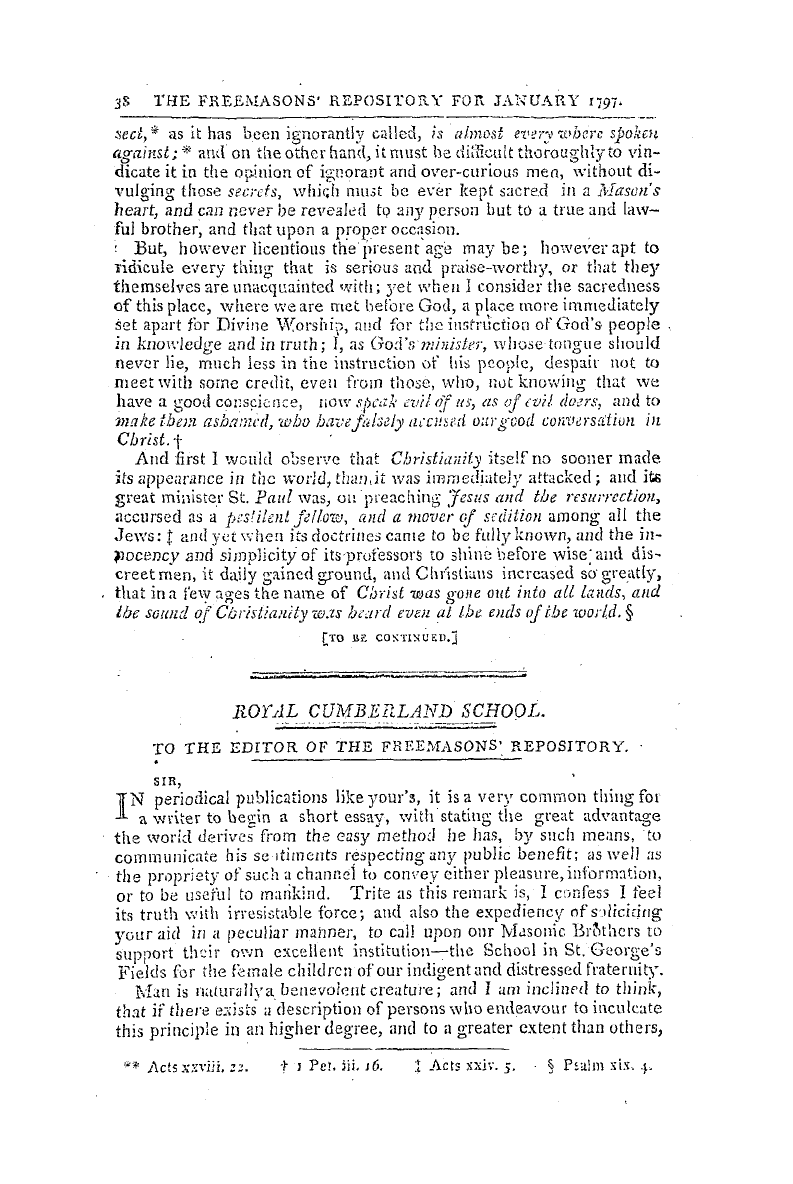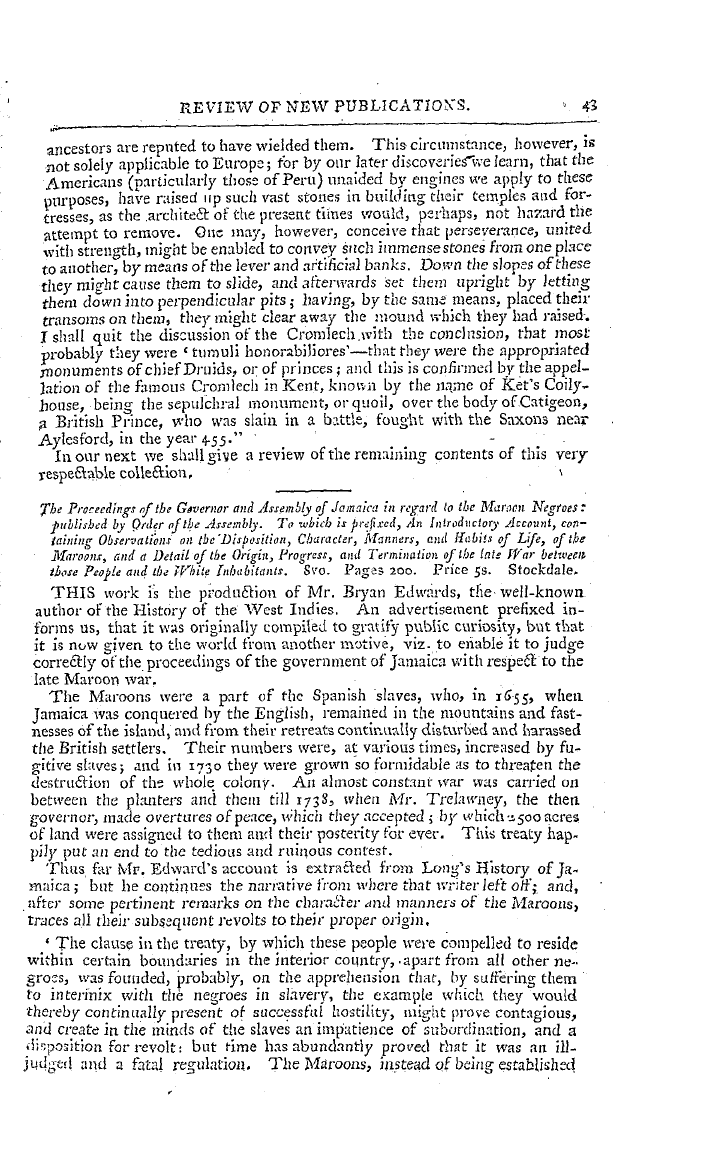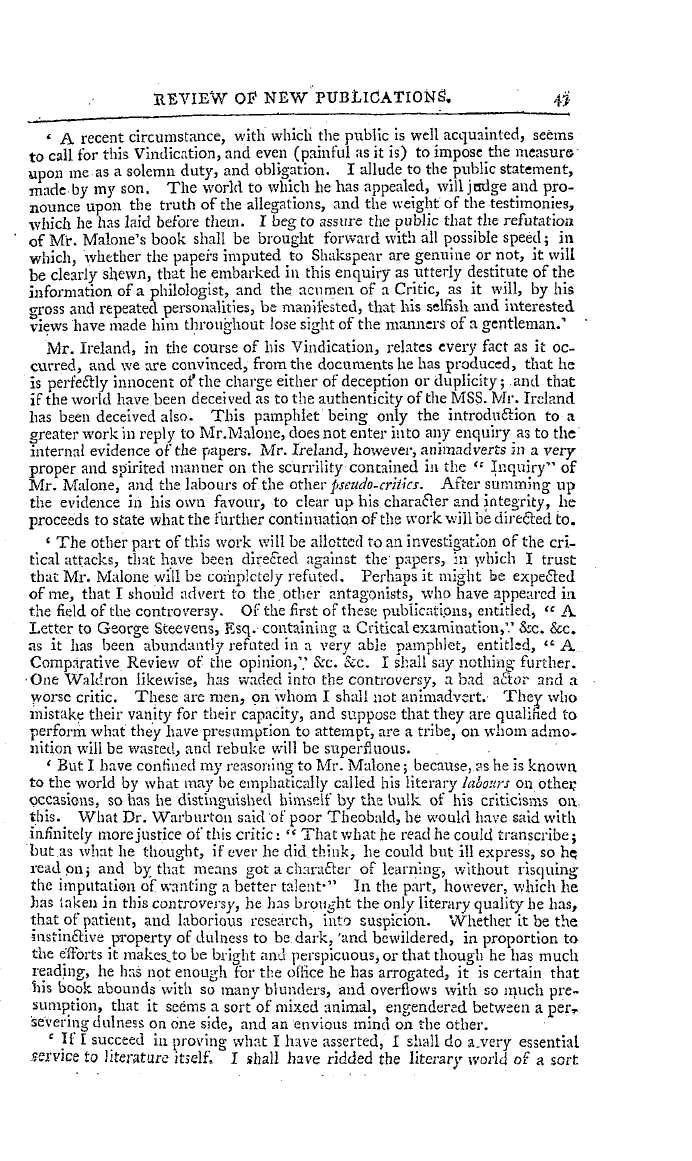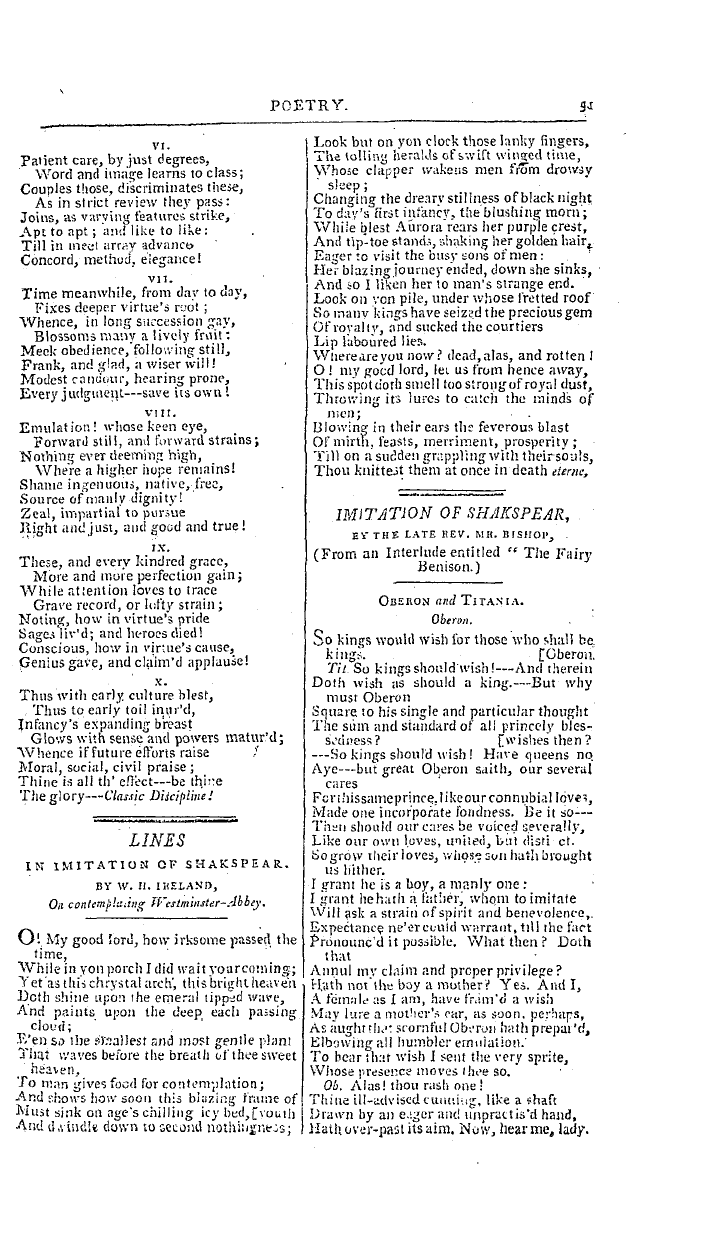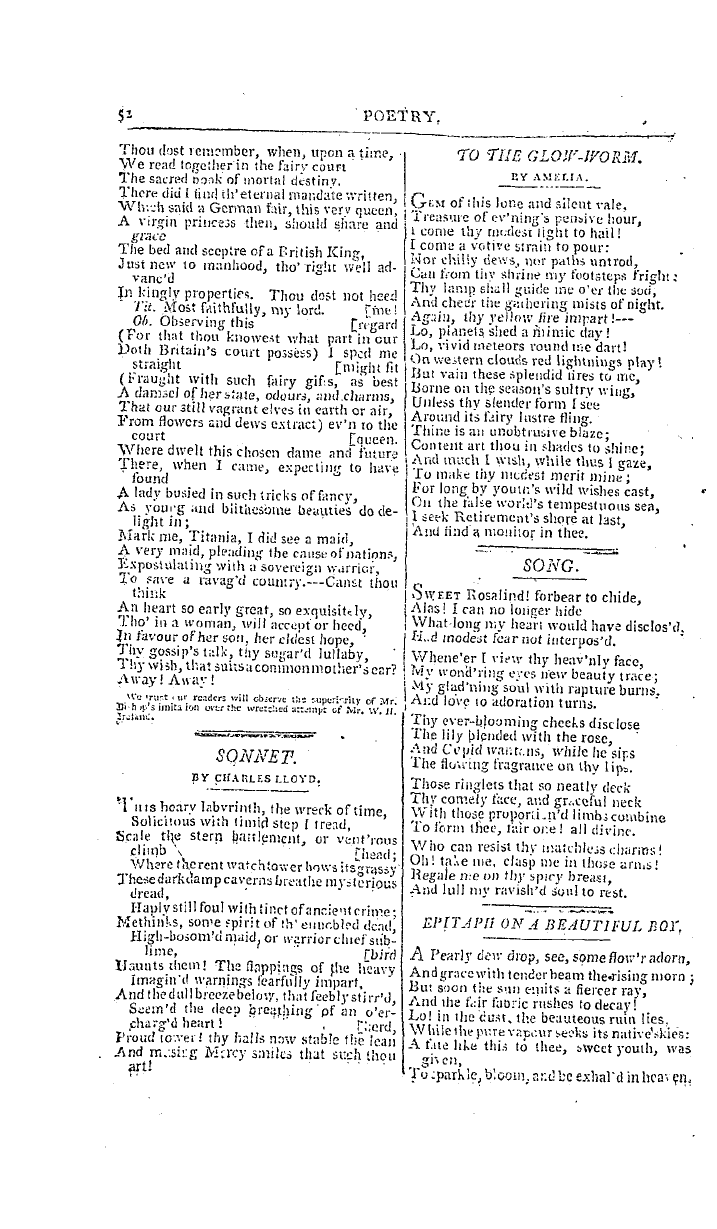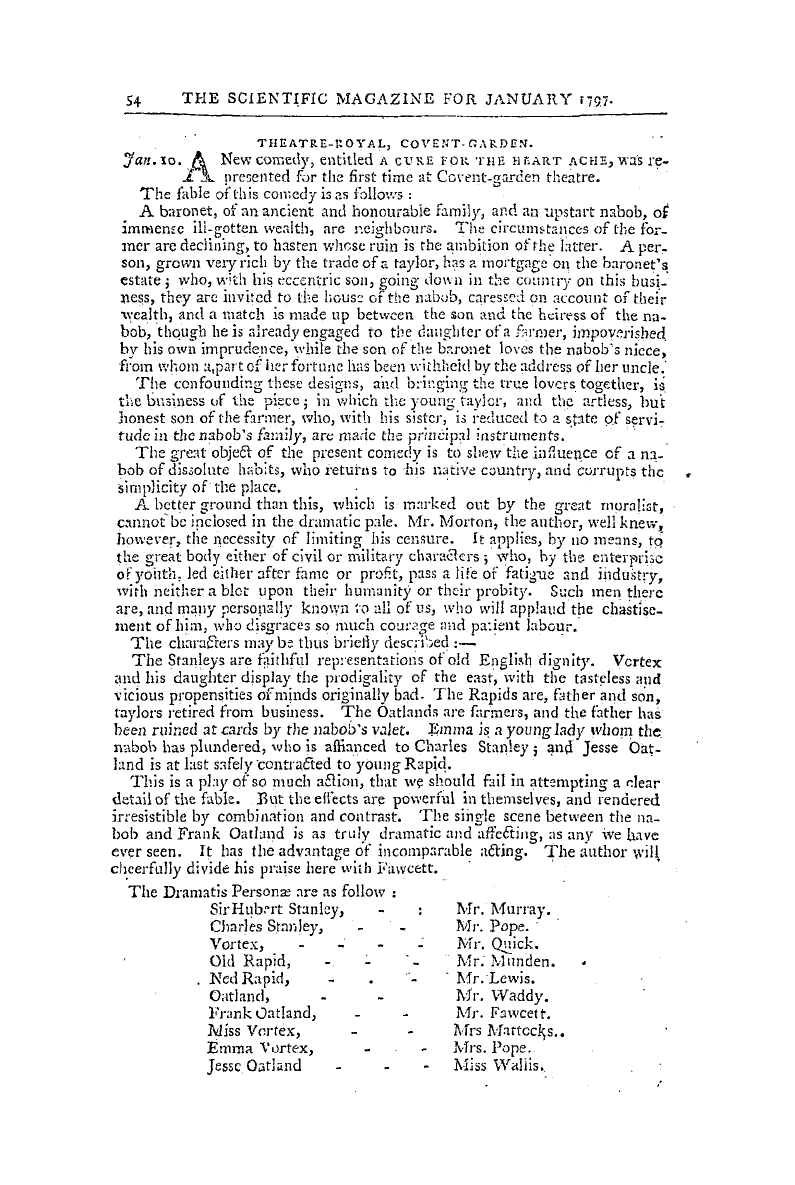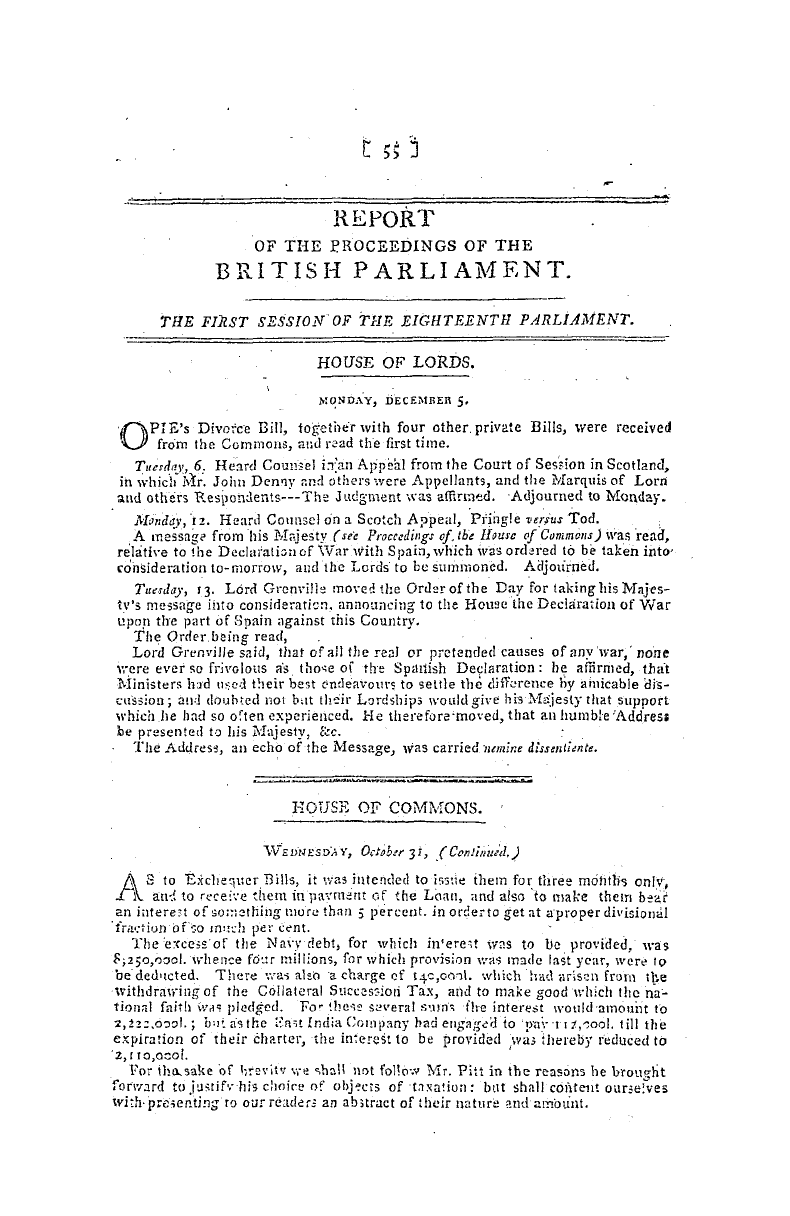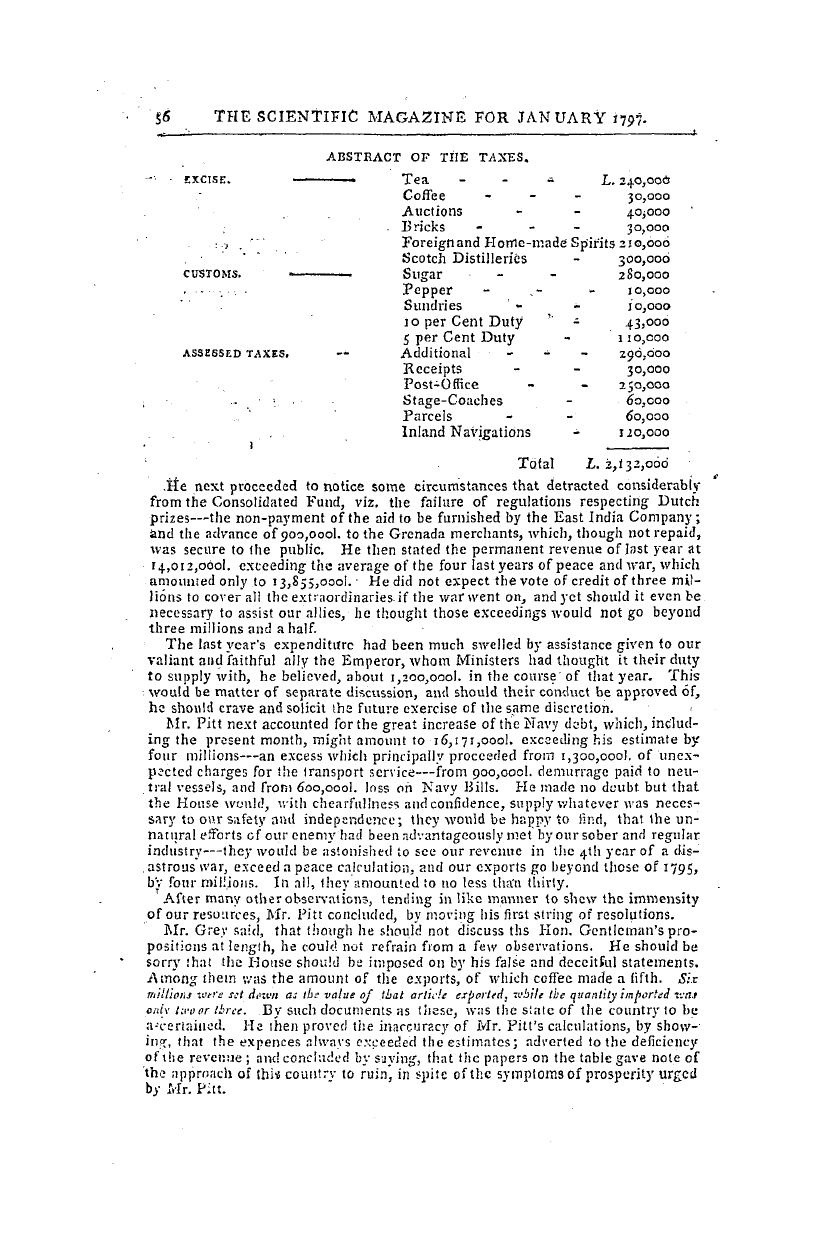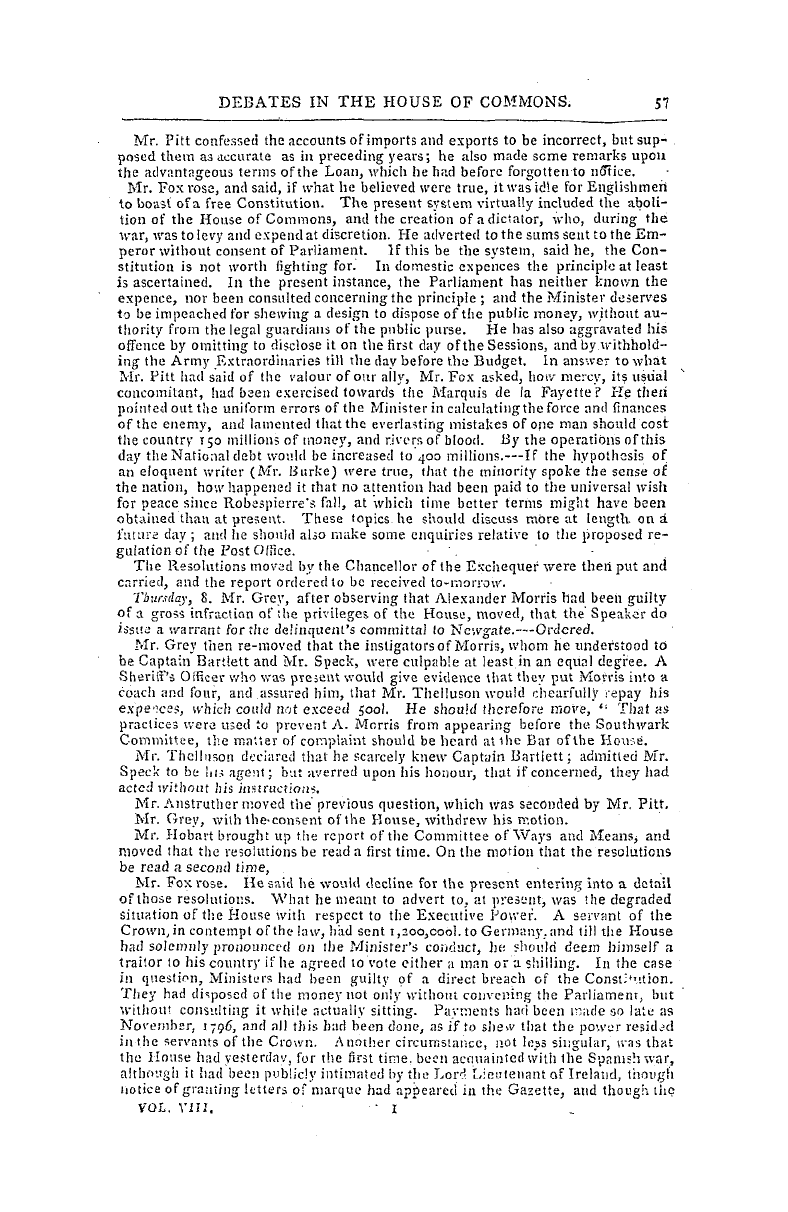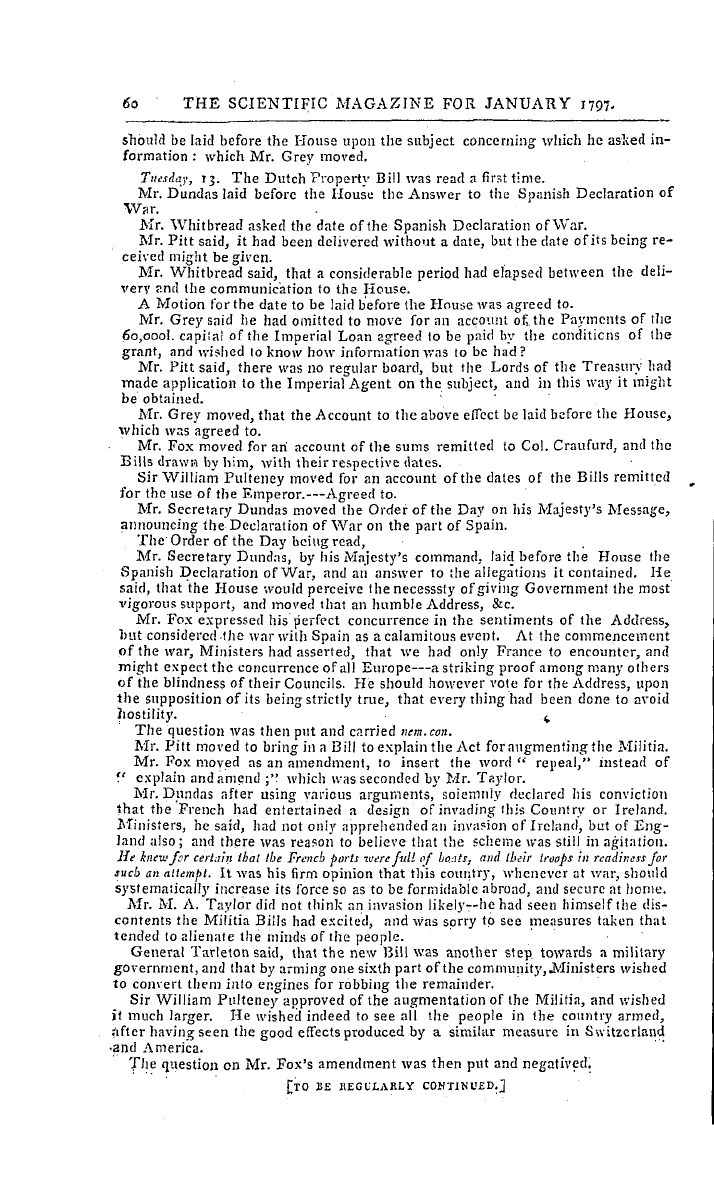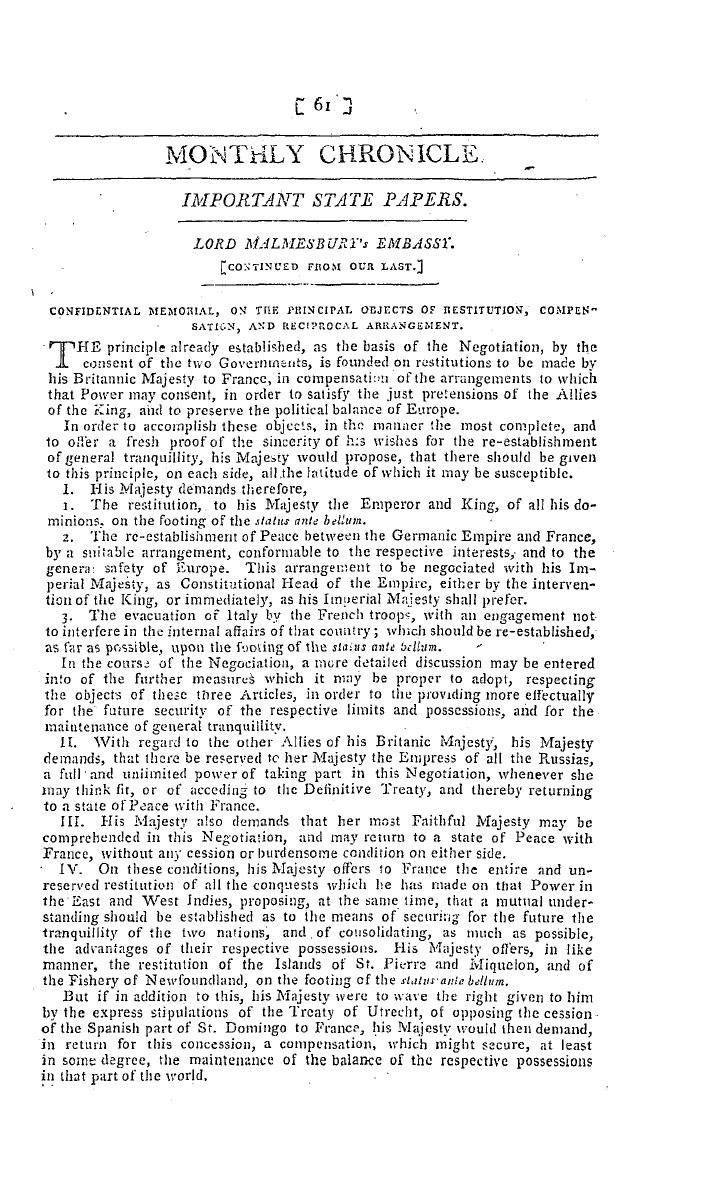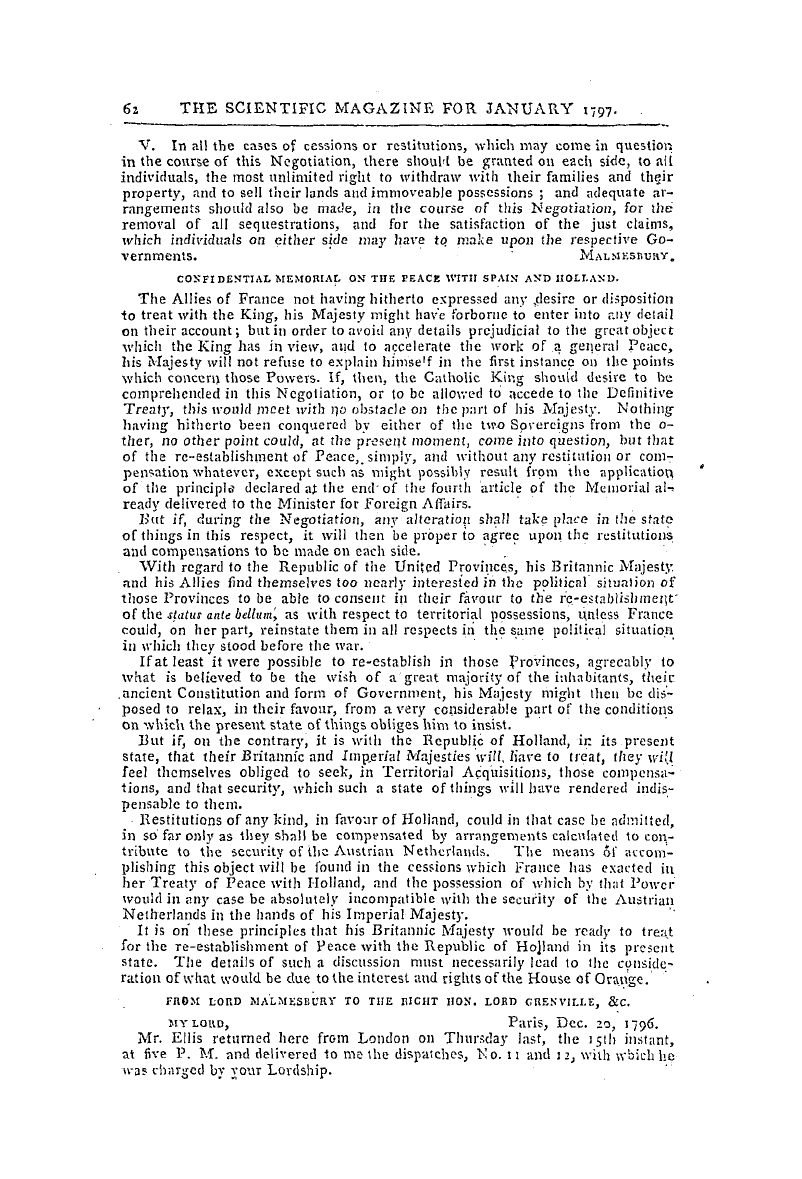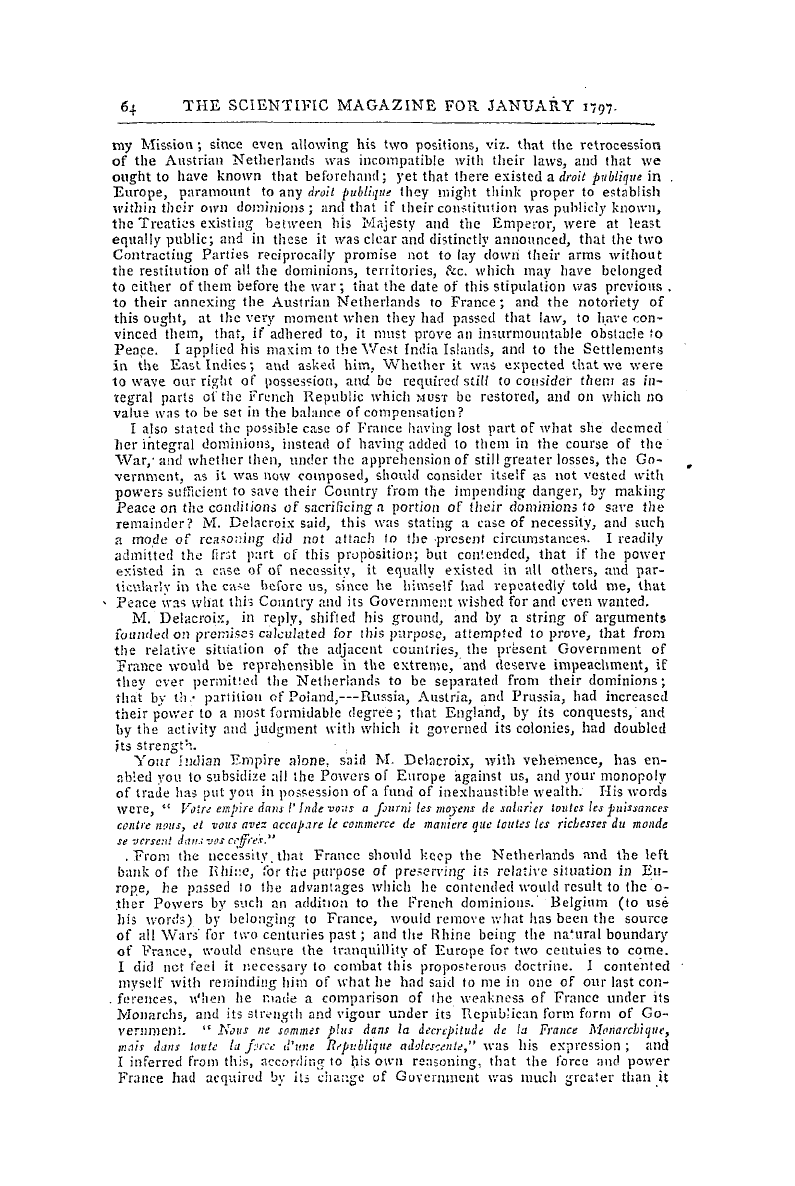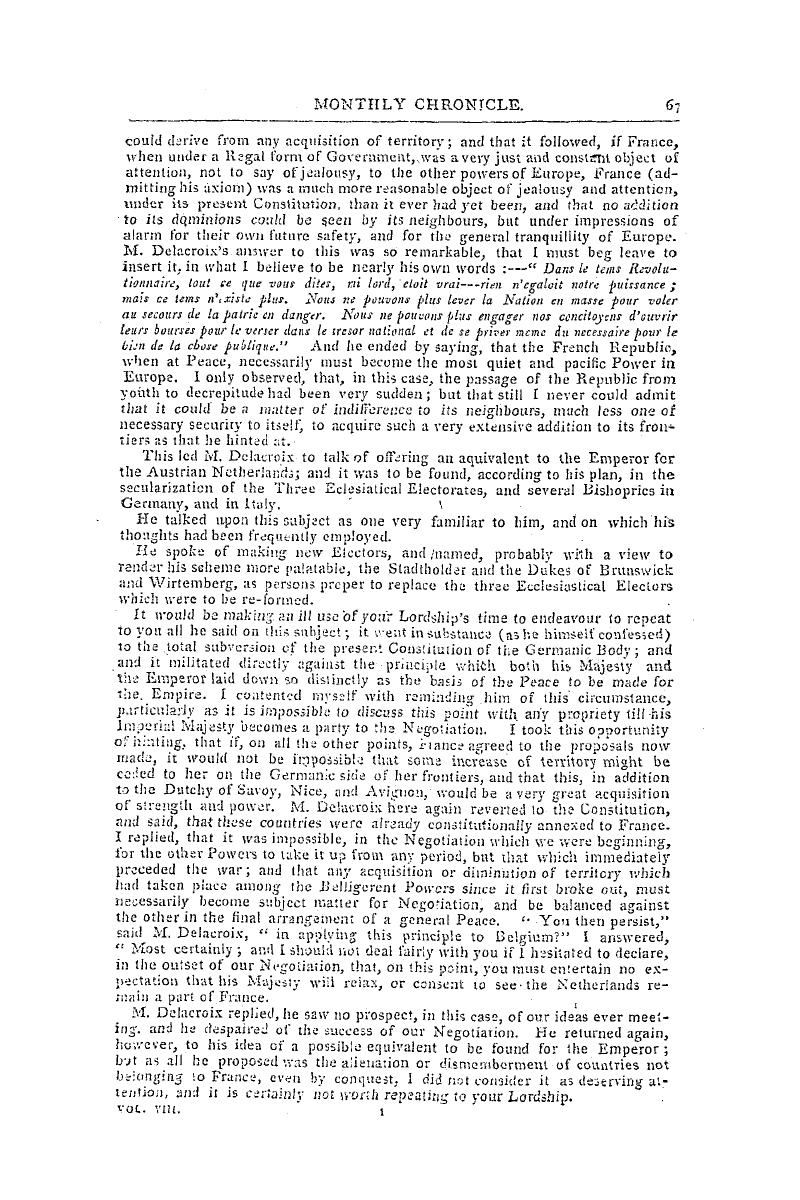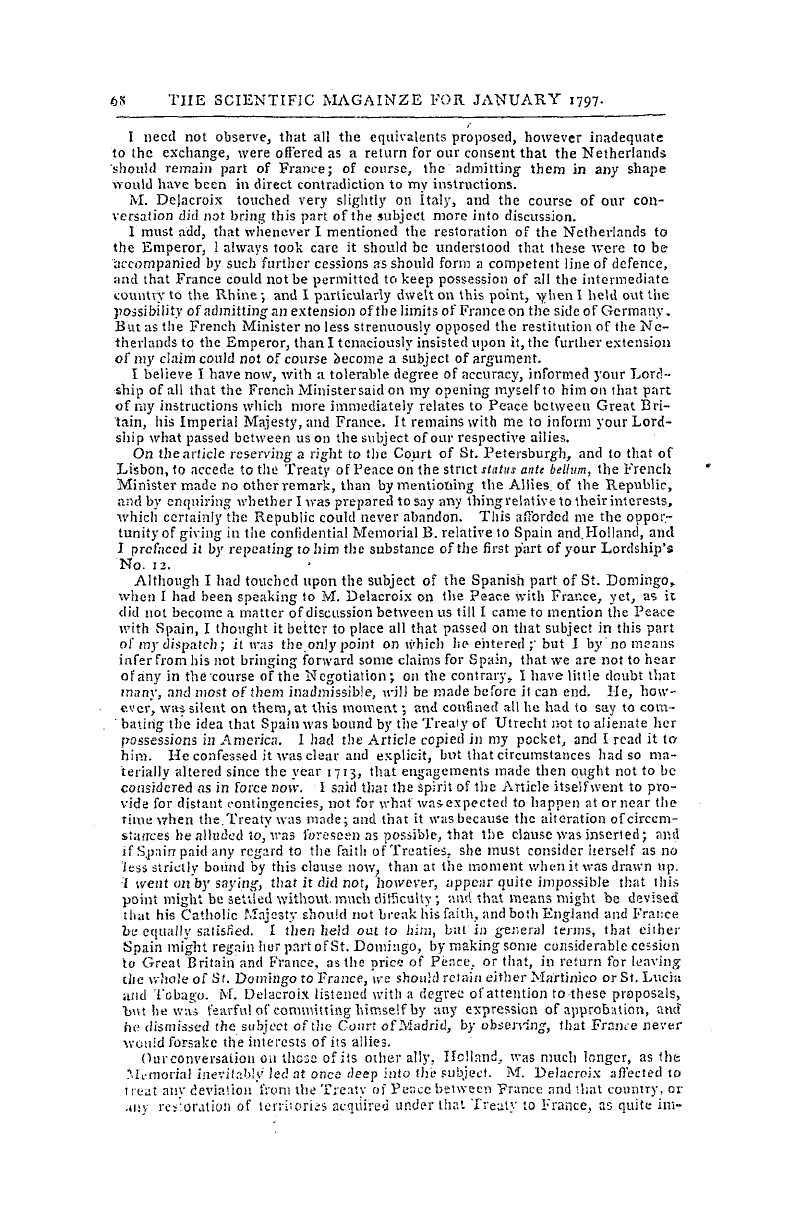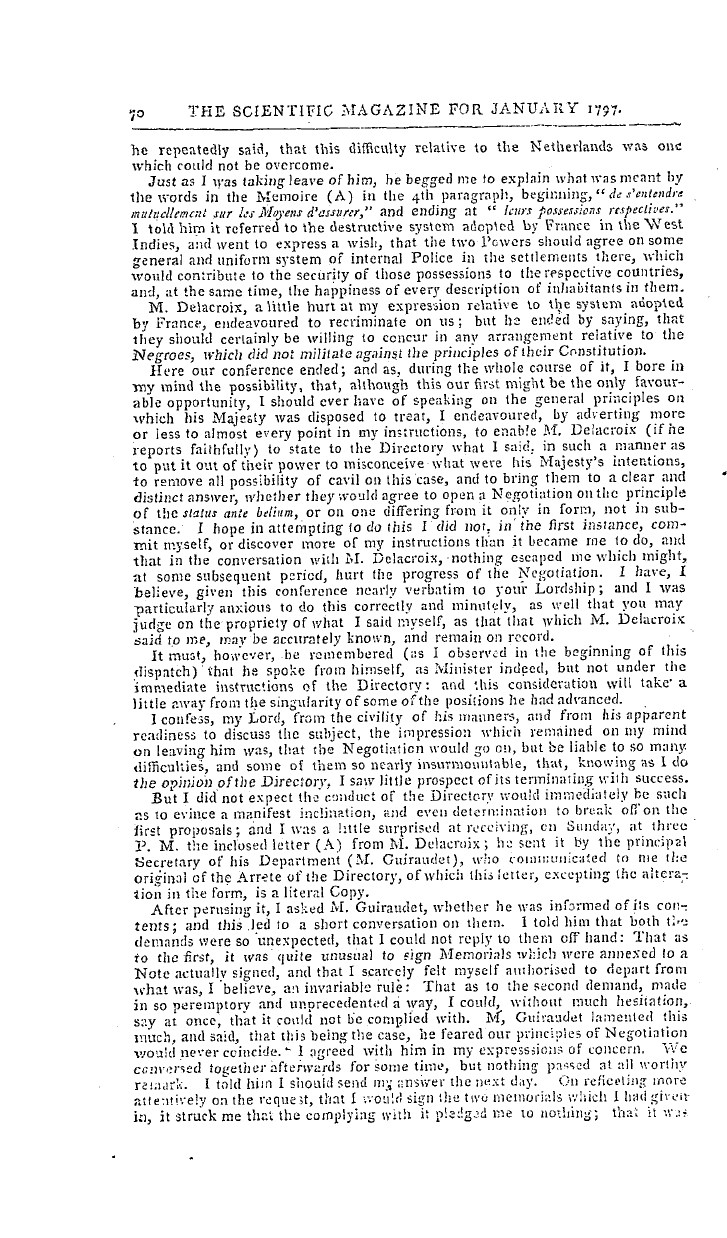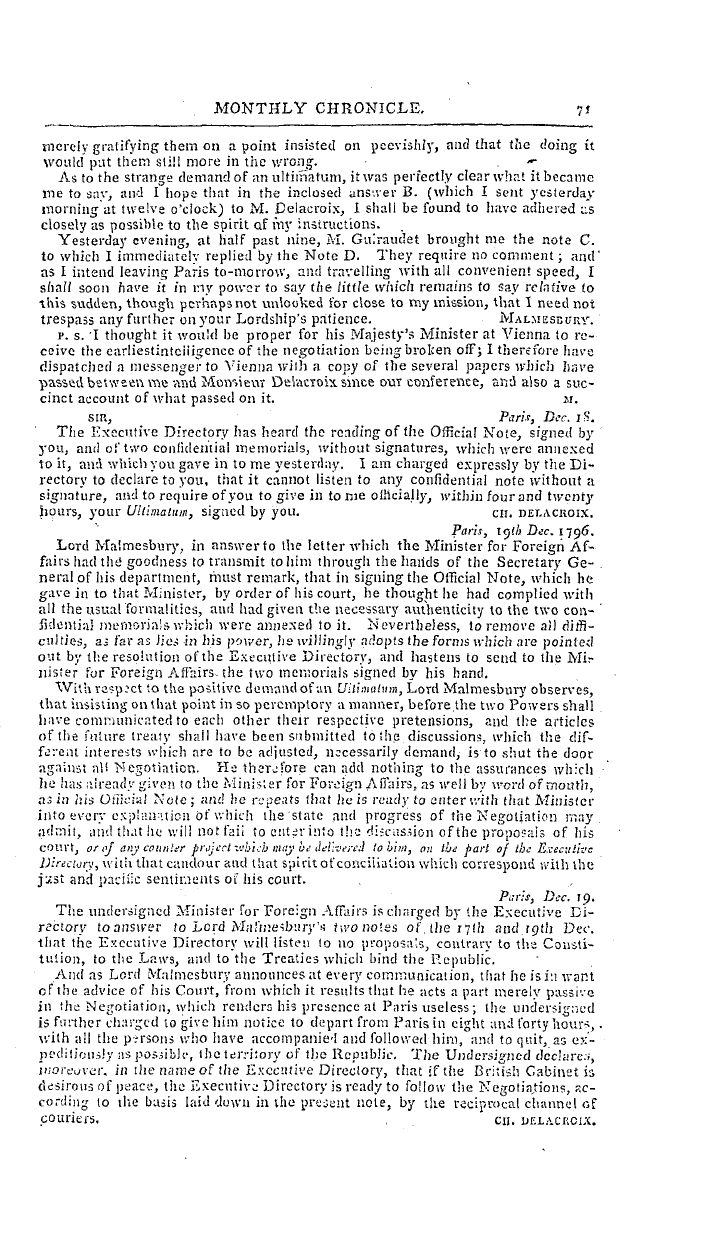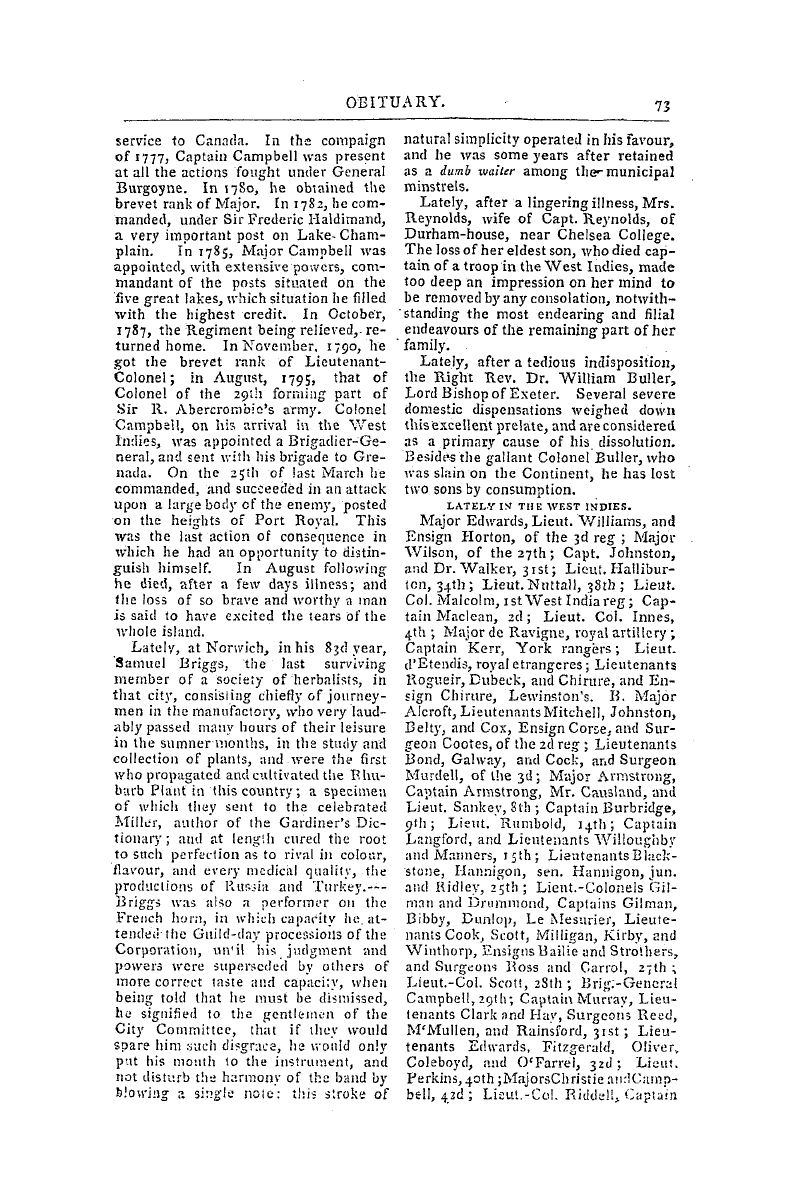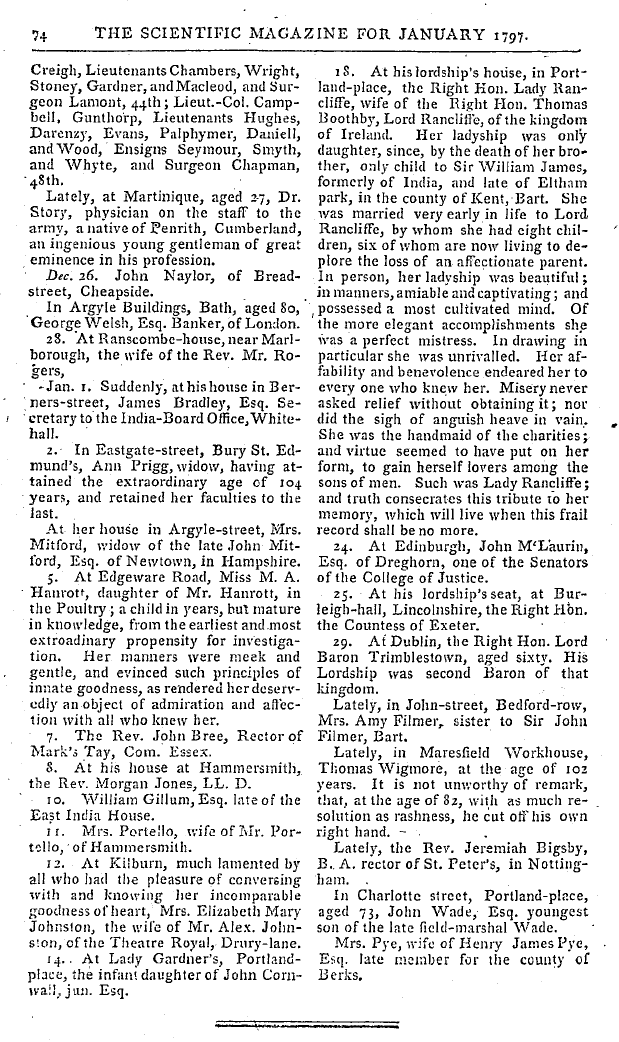-
Articles/Ads
Article REVIEW OF NEW PUBLICATIONS. ← Page 4 of 8 →
Note: This text has been automatically extracted via Optical Character Recognition (OCR) software.
Review Of New Publications.
into separate hordes or communities , in the strongest parts of the interior country , should have been , encouraged by all possible means to frequent the towns , and to intermix with the negroes at large . All distinction between the Maroons and the other free blacks would soon have been lost ; the greater number would have prevailed over the less : whereas the policy of keeping them a distinct people , continually inured to arms , introduced among them
what the French call an esprit de corps , or a community of sentiments and interests : and concealing from thenl the powers and resources of the whites , taught them to feel , and at the same time hi ghly to overvalue , their own relative strength and importance . ' - Mr . E . suspects that the Maroons , with all their seeming fury and nffeSled bravery , are far below the Whites in personal valour ; and this he chiefly infers from . their mode of fihting in real warwhich is a system of stratagem
g , , bush-fighting , and ambuscade : yet lie seems to allow that the Whites once thought otherwise : ' Possibly , he observes , their personal appearance contributed , in some degree , _ to preserve the delusion -. for , savage as they were in manners and disposition , their mode of living and daily pursuits undoubtedly strengthened the frame , and served to exalt them to great bodily perfection . ' Such -fine persons are seldom beheld among any other class of African or
nativeblacks . Their demeanour . is lofty , their walk firm , and their persons . erect . Every motion displays a combination of strength and agility . The ihuscles . ( neither hidden nor depressed by clothing ) are very prominent , and strongly marked . Their sight withal is wonderfully acute , and their hearing remarkably quick . ' After this Mr . Edwards enters into a regular historical , account of the Maroon war of 1795 and 1796 ; and we are sorry our limits will not allow us
to enter into a detail of the facts , he relates . The deaths of colonels Sandford and Fitch were circumstances which so emboldened the revulters , that they carried their cruelties into every part of the island ; and more vigorous measures were thought necessary . The military were increased , and it was determined to make use of dogs ; and for this purpose forty Spanish hunters and about a himdered of those animals were imported from the Spanish main . Such extraordinary accounts were immediatelspread of the savage nature
y snd appearance of these animals , as made a surprising impression on the minds pf the negroes . Though , generally , not larger than the B r itish shepherd ' s dog , these dogs of Cuba were represented as equal to the mastiff in bulk , to the bull-dog in courage , to tlie blood-hound in scent , and to the grey-hound in agility . These reports hadE-a powerful and salutary eifeft on the fears of the Maroons , and soon brought about a negotiation , followed by H treaty .
__This treaty , together with the correspondence between Lord Balcarres and General Walpole , an'd many other interesting papers , the reader will find among the Proceedings of the Governor and Assembly of Jamaica ; which make more than , one half of the present volume . The final-steps taken , in confor-, inity with the treaty , are thus related b y Mr . Edwards : ' : _ ' Soon after the subsequent minutes were printed by order of the assembly , his Majesty ' s siiip the Doverwith two transports in having on
, company , board the Trelawiiey Maroons , ( in number about six hundred ) provided with all manner of necessaries , as well for their accommodation at sea , as for the change of climate , sailed from Blue-fields in Jamaica , for Halifax in North America , the beginning of last June . They were accompanied by William Dawes Quarrel and Alexander Ouchterlo ' ny , Esquires , commissioners appointed by the Assembly , with authority and instructions ( subject to his .
Note: This text has been automatically extracted via Optical Character Recognition (OCR) software.
Review Of New Publications.
into separate hordes or communities , in the strongest parts of the interior country , should have been , encouraged by all possible means to frequent the towns , and to intermix with the negroes at large . All distinction between the Maroons and the other free blacks would soon have been lost ; the greater number would have prevailed over the less : whereas the policy of keeping them a distinct people , continually inured to arms , introduced among them
what the French call an esprit de corps , or a community of sentiments and interests : and concealing from thenl the powers and resources of the whites , taught them to feel , and at the same time hi ghly to overvalue , their own relative strength and importance . ' - Mr . E . suspects that the Maroons , with all their seeming fury and nffeSled bravery , are far below the Whites in personal valour ; and this he chiefly infers from . their mode of fihting in real warwhich is a system of stratagem
g , , bush-fighting , and ambuscade : yet lie seems to allow that the Whites once thought otherwise : ' Possibly , he observes , their personal appearance contributed , in some degree , _ to preserve the delusion -. for , savage as they were in manners and disposition , their mode of living and daily pursuits undoubtedly strengthened the frame , and served to exalt them to great bodily perfection . ' Such -fine persons are seldom beheld among any other class of African or
nativeblacks . Their demeanour . is lofty , their walk firm , and their persons . erect . Every motion displays a combination of strength and agility . The ihuscles . ( neither hidden nor depressed by clothing ) are very prominent , and strongly marked . Their sight withal is wonderfully acute , and their hearing remarkably quick . ' After this Mr . Edwards enters into a regular historical , account of the Maroon war of 1795 and 1796 ; and we are sorry our limits will not allow us
to enter into a detail of the facts , he relates . The deaths of colonels Sandford and Fitch were circumstances which so emboldened the revulters , that they carried their cruelties into every part of the island ; and more vigorous measures were thought necessary . The military were increased , and it was determined to make use of dogs ; and for this purpose forty Spanish hunters and about a himdered of those animals were imported from the Spanish main . Such extraordinary accounts were immediatelspread of the savage nature
y snd appearance of these animals , as made a surprising impression on the minds pf the negroes . Though , generally , not larger than the B r itish shepherd ' s dog , these dogs of Cuba were represented as equal to the mastiff in bulk , to the bull-dog in courage , to tlie blood-hound in scent , and to the grey-hound in agility . These reports hadE-a powerful and salutary eifeft on the fears of the Maroons , and soon brought about a negotiation , followed by H treaty .
__This treaty , together with the correspondence between Lord Balcarres and General Walpole , an'd many other interesting papers , the reader will find among the Proceedings of the Governor and Assembly of Jamaica ; which make more than , one half of the present volume . The final-steps taken , in confor-, inity with the treaty , are thus related b y Mr . Edwards : ' : _ ' Soon after the subsequent minutes were printed by order of the assembly , his Majesty ' s siiip the Doverwith two transports in having on
, company , board the Trelawiiey Maroons , ( in number about six hundred ) provided with all manner of necessaries , as well for their accommodation at sea , as for the change of climate , sailed from Blue-fields in Jamaica , for Halifax in North America , the beginning of last June . They were accompanied by William Dawes Quarrel and Alexander Ouchterlo ' ny , Esquires , commissioners appointed by the Assembly , with authority and instructions ( subject to his .










































